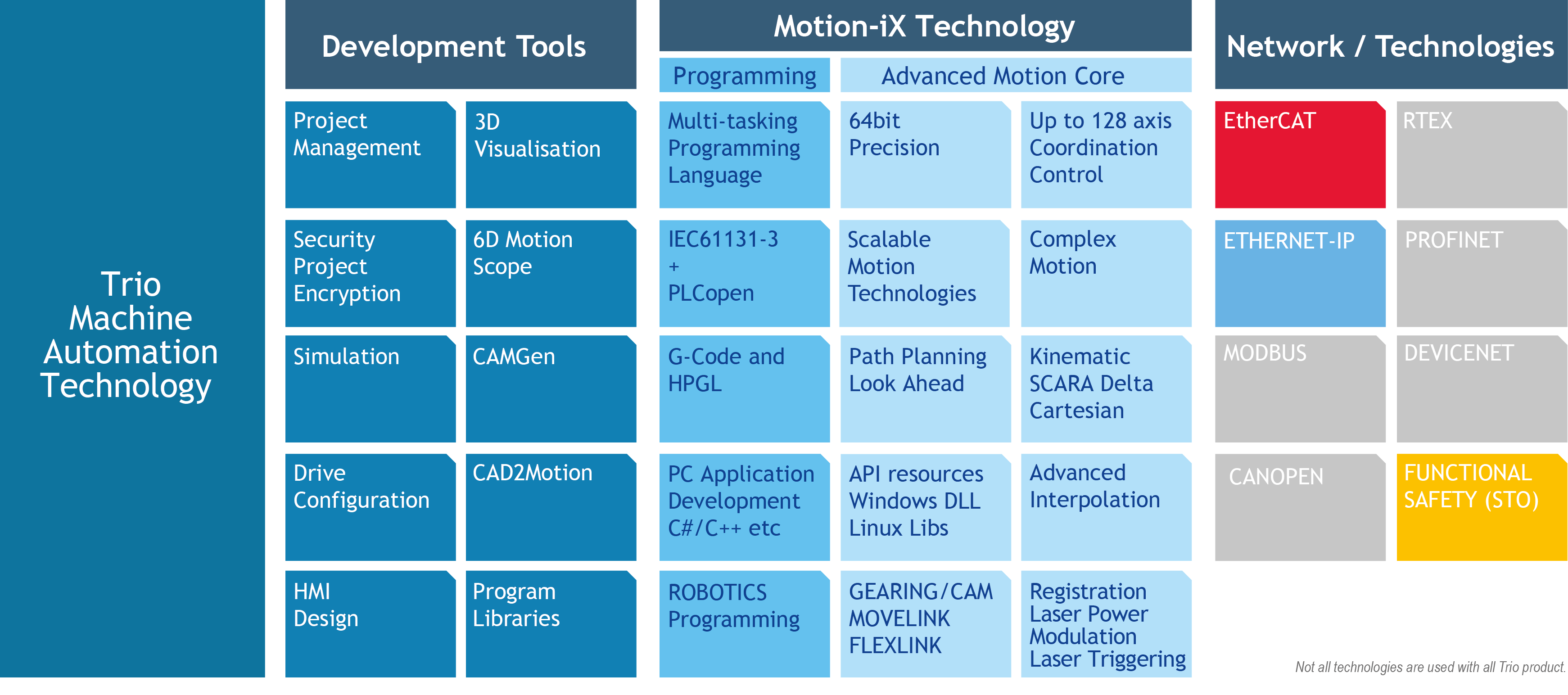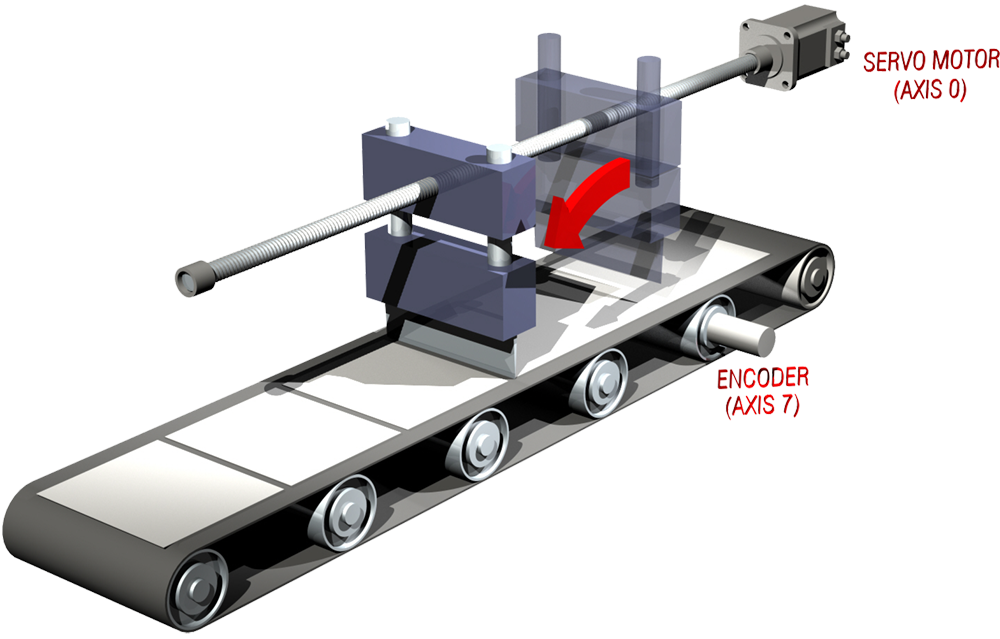SOFTWARE
IEC 61131-3
Features
- Standard language can be used by any programmer who is already familiar with IEC 61131-3
- Choice of graphical or textual programming while attaining consistent results
- Visual interactive debugging information
- Real-time program execution
- Powerful and familiar Trio Motion function block library
- Program editor is built-in to MotionPerfect
- Multi-tasking operation with user selectable priorities
The adoption of IEC 61131-3 by the industry is driven by the needs of control and automation designers to reduce the creation time, labour cost, and maintenance of control software.
Using the IEC 61131-3 vendor-independent programming language standard can have a major impact on control projects and applying a standard programming language has a positive impact on the software life-cycle; including specification, software design, testing, installation, operation, and maintenance.
The impact on maintenance is important since control software maintenance, including upgrades, can cost more than the initial programming.
Click here for the Trio Application note on Getting Started with IEC 61131
Click here for the: IEC 61131-3 datasheet.pdf
Programming languages
In IEC 61131-3, five standard programming languages are defined, including syntax and semantics, so that once you have learned the five languages, you can use a wide variety of systems based on the standard. Motion Perfect supports 4 of the five languages:
- Ladder (LD)
- Function Block Diagram (FBD)
- Structured Text (ST)
- Sequential Function Charts (SFC)
The less popular Instruction List (IL) is not supported because it is less relevant to motion control programming.
Edit and de-bug
Motion Perfect has a full function text and graphical editor with context specific toolbox and variable definitions. The function block editor has drag-and-drop capability to make programming easy and intuitive. User prompts allow first-time users to see exactly what is required when inter-connecting functions and variables.
In de-bug mode, the variable values are shown in place on the diagram, giving immediate feedback to the programmer about the state of the program. Other Motion Perfect tools can be open at the same time as the IEC 61131-3 pages, so inputs, outputs axis parameters and global variables can all be viewed in real-time during the debug process.
Motion Functions
A dedicated library of Motion Functions provides the IEC 61131-3 program full access to Trio’s established motion software which has stood the test of time and been proven in thousands of applications. All the functions that are available in Trio Programming Language are also accessible from the IEC 61131-3, using any of the supported programming languages. Whether it is simple point to point, interpolated moves or gears and cams, the IEC 61131-3 programmer can do it.
Below is a flying shear example (as used in the Trio Programming Language section) using the FDB language.
PLC type performance
Each IEC 61131-3 task can be set independently to run at its own tick rate, or to be run continuously. Important tasks that are running fast motion can be set to run at intervals of just a few milliseconds, while less important background tasks can be run with a cycle time of 20, 30, 50 and more msecs.
In this way the whole system can be balanced and cycle times set for best operation. The cyclic processing of IEC 61131-3 tasks is familiar to established PLC programmers, whether using ladder, structured text or function block.


